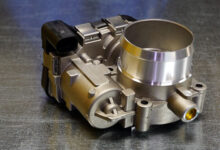Camshaft Position Sensor| Anything You Want To Know About Camshaft Sensor
Every modern automotive has a camshaft position sensor. This sensor is an important part of every car since it guarantees that the engine is running properly. When checking beneath your car’s hood, you may have difficulty locating the sensor. Typically, each car manufacturer will have a distinct location for the sensor near the engine. It can be situated behind the cylinder head, in the lifter valley of the car, or next to the engine block.
The job of a camshaft position sensor is to determine where the camshaft is in relation to the crankshaft. This information is received by the powertrain control module (PCM) and used to run the fuel injectors and/or ignition system.
What is a Camshaft Position Sensor?
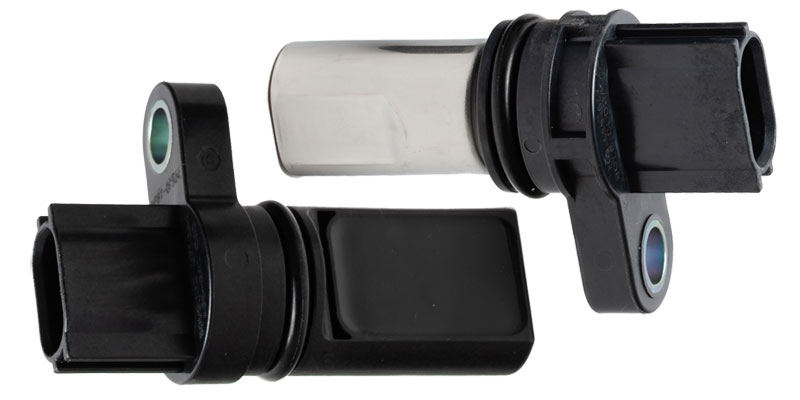
The camshaft position sensor monitors the rotation of the camshaft, focusing on when the valves open and close. The majority of camshaft sensors are positioned directly above the notched ring of the camshaft. The majority of these camshaft sensors will use a magnet to generate or change an alternating current (AC) electrical signal, which will be used in conjunction with a crankshaft position sensor to determine when a position approaches top dead center (TDC) on the compression stroke. This information will be used to fine-tune the spark timing and injector pulse. It’s also referred to as a cylinder identification sensor or a phase detector.
In a sequential fuel injection system, the ECU must determine which cylinder to ignite next. This information is provided by the cylinder identification sensor. The sensor sends a signal to the onboard controller (TDC) once the first cylinder is at top dead center during engine rotation.
Read Also: Exhaust Leak | Repair Cost and Symptoms of Exhaust Leak
Where Is the Camshaft Sensor Located?
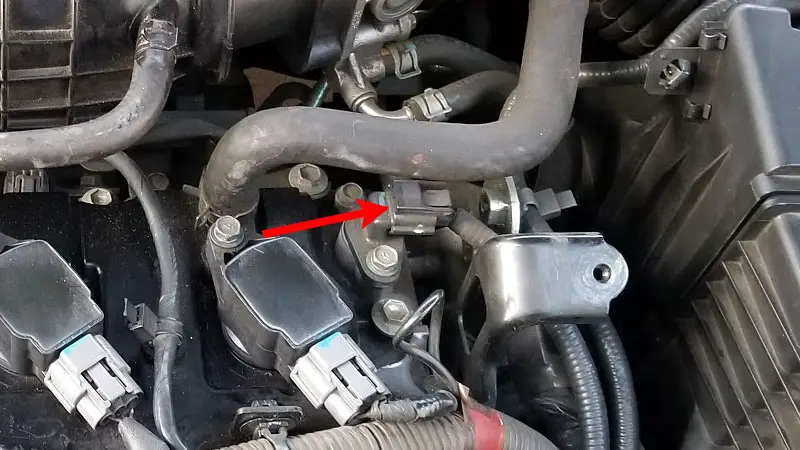
The precise location of an engine’s camshaft position sensor varies from vehicle to vehicle. In some engines, the sensor is fastened directly to a port in the unit’s front timing cover. On other vehicles, this sensor is fastened to the valve cover or cylinder head of the engine.
If you are unsure about the precise location of your vehicle’s camshaft position sensor, obtain and study a copy of the factory-specific service and maintenance manual for your individual vehicle.
Camshaft Position Sensors: Work

A Hall effect sensor is the camshaft position sensor, often known as the cam sensor. It detects magnetic fields and measures their strength. It senses how the camshaft is positioned as it revolves by being placed very close to a ring gear on the camshaft. The sensor’s voltage varies as the cam rotates due to different places on the ring gear. This data tells the car’s onboard computer how the camshaft is positioned in the engine, allowing the computer to determine the top dead center (TDC) position of cylinder #1. Everything is timed in relation to TDC.
However, the data from the camshaft position sensor is insufficient to start the engine. Other components, such as crankshaft position sensors, mass air flow sensors, and a variety of other sensors and systems, are also required by the onboard computer. Using data from the camshaft sensor and other sensors, fuel is pumped into the cylinders at precisely the appropriate time, and the spark plug fires and ignites the air-fuel mixture.
Cleaning of Camshaft Position Sensor?
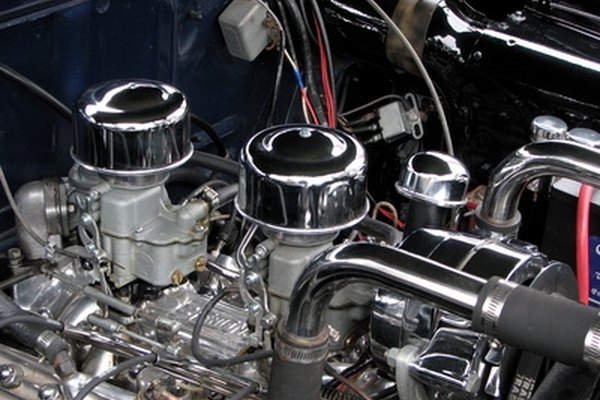
Any vehicle-related equipment must be serviced on a regular basis. Cleaning the sensor is straightforward. First, detach the engine’s battery to turn off all electrical and electronic circuits. Next, figure out where it is in your vehicle. Remember to separate and reconnect the sensor’s three cords. Before connecting, clean and dry the sensor with a cleaning solution.
Return the sensor’s three wires to their original locations. Restart the system after reconnecting the battery. You carefully cleaned the camshaft position sensor. After some time has passed, repeat this process.
Camshaft Position Sensor Replacement Cost
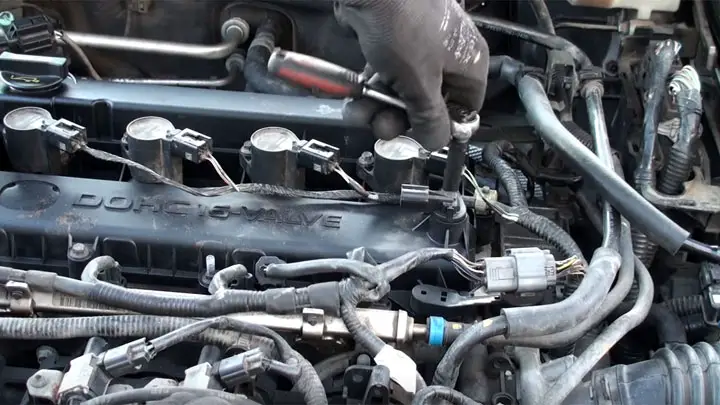
A camshaft position sensor can cost between $95 and $200 to replace. Parts will cost between $25 and $100. For expert replacement, labor charges will range between $70 and $100.
Expect to pay more if you have a fancy vehicle or are having the replacement done at a local car dealership. Additional fees and taxes will be charged to these expenses.
Replacement of Camshaft Position Sensor By Yourself
This is one of those chores that practically anyone can accomplish and is a simple method to avoid paying the minimum labor price (typically close to $100) charged by a repair shop or dealership. It should just take 5-10 minutes to replace.
How to Replace a Camshaft Position Sensor?

- Remove the negative battery cable.
- Find the sensor. It is commonly located on the top, front, or back of the engine. It will most likely be equipped with a 2-3 wire connector.
- To detach the wires from the sensor, release the tab on the sensor.
- Remove the bolt that connects the sensor to the engine. Typically, an 8mm or 10mm bolt is used.
- With a small twist, remove the sensor.
- Apply a small amount of engine oil to the new senor’s o- ring.
- Secure the new camshaft position sensor with the mounting bolt.
- Reconnect the sensor’s wire connector.
- Connect the negative battery terminal once more.
How to reset the camshaft position sensor?
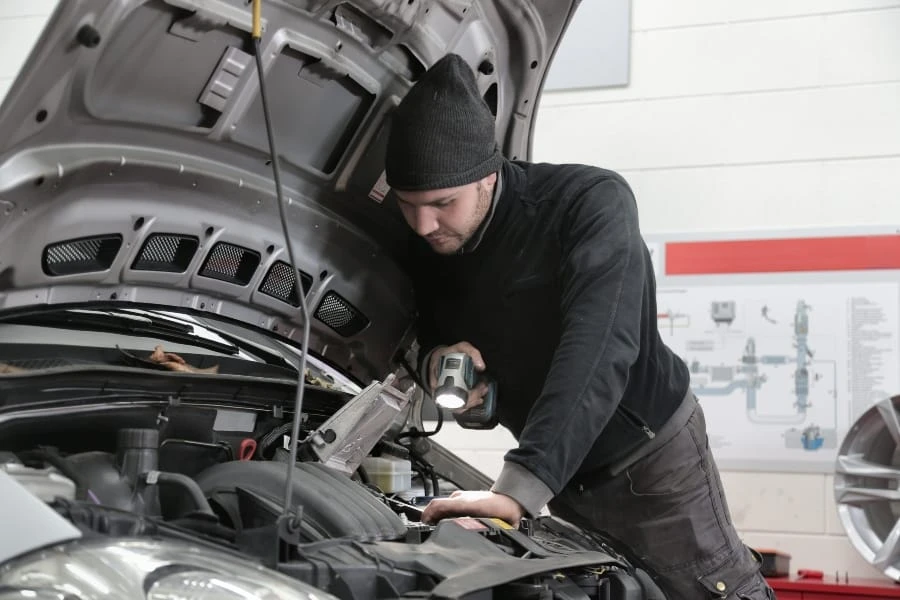
A camshaft position sensor, obviously, cannot be reset. As a result, if your camshaft fails (check engine light illuminated, acceleration issues, sputtering and stalling, etc.), you must replace the component.
If you are comfortable working on your engine, you can replace your camshaft sensor yourself, or you can hire a mechanic.
Fortunately, you may offset the cost of a technician by saving over $800 on auto insurance each year. With Way.com, you can get the best pricing in seconds with the touch of a mouse! The quote process on Way.com is quick, easy, and absolutely free. Download the app and start saving money right away.
Symptoms of a Camshaft Position Sensor
There are some symptoms of Camshaft Position Sensor are given below:
-
Illuminated Check Engine Light

In most circumstances, a defective camshaft position sensor will trigger a vehicle’s check engine light. This happens when a vehicle’s PCM logs one or more timing-related diagnostic problem codes.
-
Problems Shifting
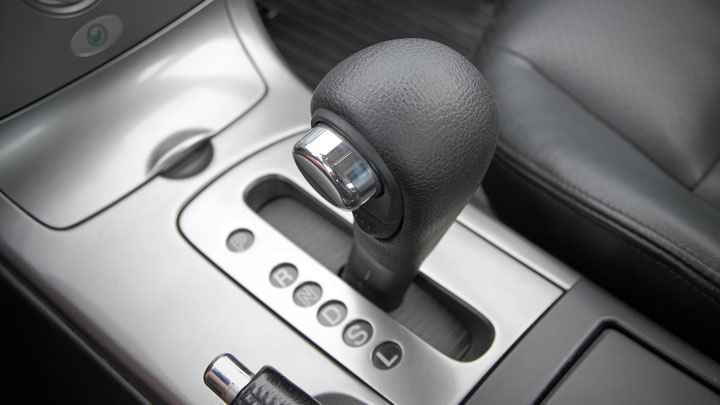
Certain car models with a faulty camshaft position sensor will experience a locked transmission that remains stuck in a single gear. The only method to get out of that gear is to turn off your engine, wait a few seconds, and then restart.
-
Poor Acceleration

When your camshaft sensor fails, your vehicle will jerk and won’t accelerate swiftly. In certain cases, you’d be lucky to get above 30 miles per hour. Again, incorrect fuel supply from the injectors is to fault for the slow acceleration.
-
Stalling

As in the last example, some automobiles require an exact camshaft position sensor signal to function. When this signal is lost, even for a little moment, the engine will most likely stall.
-
Failed Emissions Test
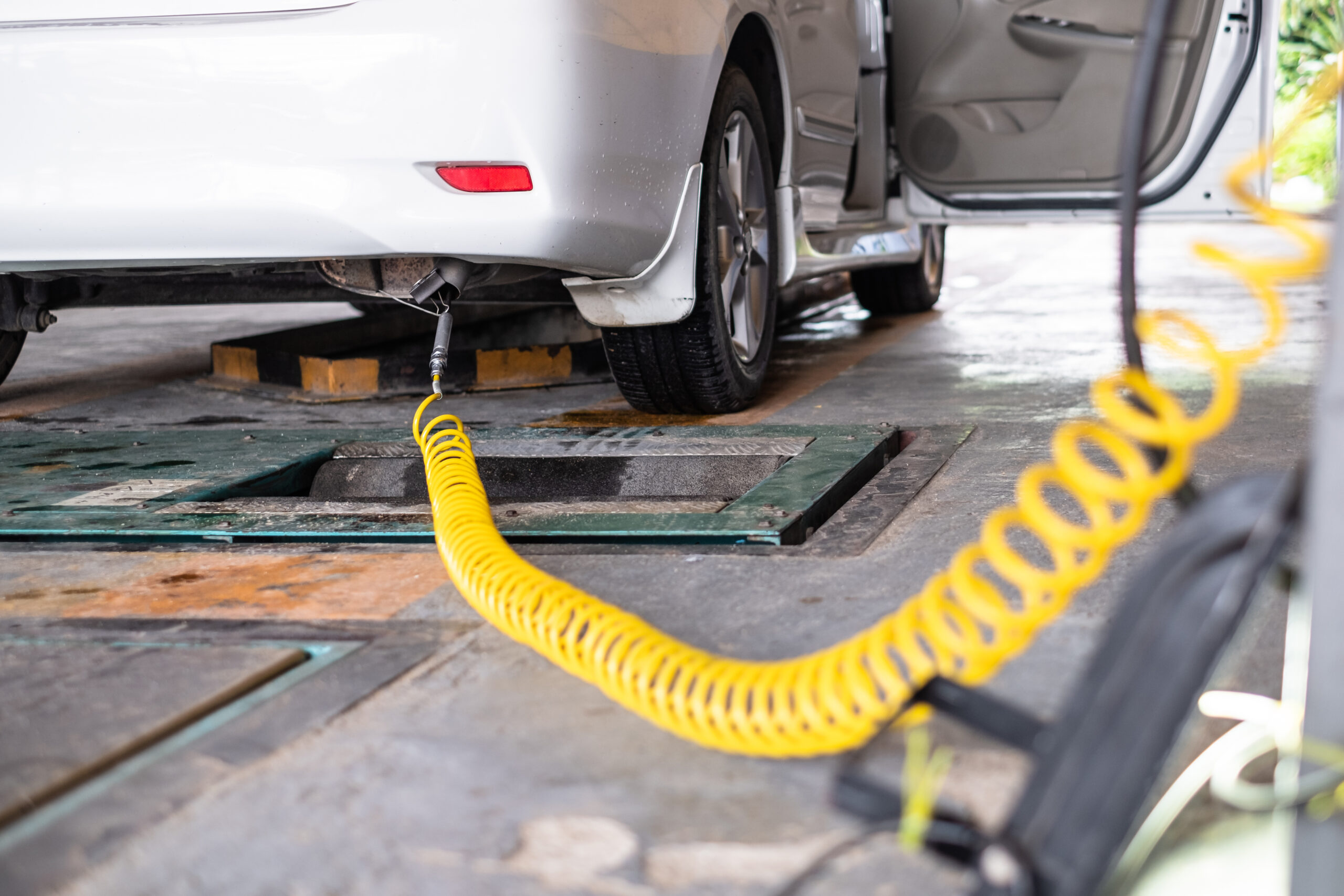
A failed camshaft position sensor can really cause a car to fail state-mandated emissions testing for the same reason as explained above. Overfeeding, even for brief durations, can result in excessively rich exhaust emissions.
-
Bad Fuel Mileage
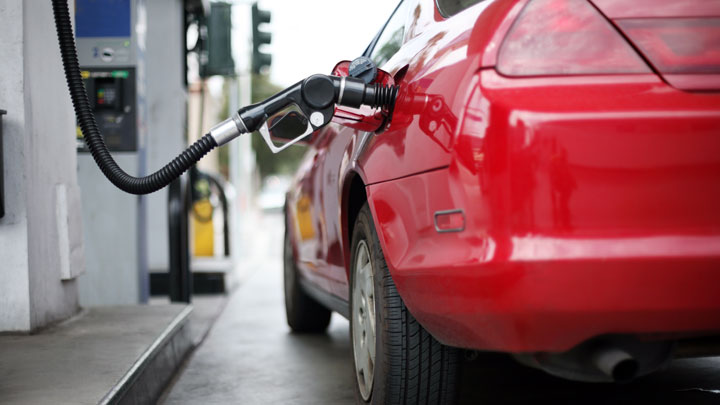
This is the inverse of not providing enough gasoline to the engine. In this case, more gasoline is poured into the engine than is necessary due to an incorrect reading from a defective camshaft position sensor, decreasing your fuel economy.
-
Ignition Problem

If the camshaft position sensor fails while you’re driving, the engine will lose power on sometimes, causing your car to tremble or rush forward at random. Both of these are caused by the PCM receiving faulty data from the camshaft position sensor, resulting in an improper amount of gasoline being delivered into the cylinders.
Camshaft Position Sensor Fault

The camshaft sensor might fail for a variety of reasons are:
- Mechanical harm
- Encoder wheel failure
- Short circuits within the body
- Connection to the control unit is lost.
Can You Drive With a Bad Cam Sensor?
Driving with a faulty camshaft position sensor is never recommended unless absolutely necessary to reach a safe location for repair. This is due to the wide range of drivability-related symptoms that frequently precede such a failure.
Attempting to drive in this manner may leave one stranded on the side of the road with few options.
In any case, a malfunctioning sensor should be replaced as soon as possible. This avoids future hardship, as the state of the camshaft sensor in question only worsens. If you do not feel comfortable doing such repairs yourself, schedule an appointment with a reputable service shop as soon as possible.
Camshaft Position Sensor Have a Fuse?
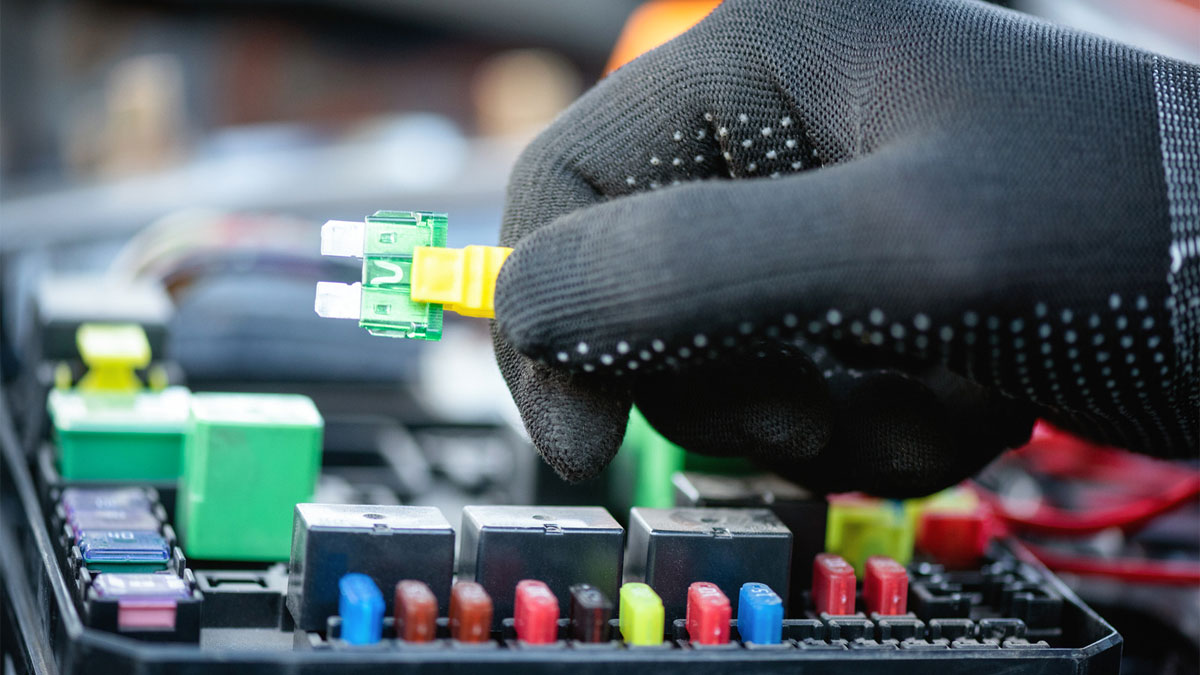
Depending on the car, you may discover that your vehicle’s camshaft position sensor is powered by a fused circuit.
In such cases, it is critical to check the continuity of this fuse before delving more into a camshaft position sensor-related problem. In many circumstances, this fuse can easily be replaced; nevertheless, further investigation is required to determine the source of the blown fuse.
Conclusion
A camshaft position sensor monitors the rotation of the camshaft, focusing on when valves open and close. The majority of camshaft sensors are positioned directly above the notched ring of the camshaft. The majority of these camshaft sensors will use a magnet to generate or change an alternating current (AC) electrical signal, which will be used in conjunction with a crankshaft position sensor to determine when a position approaches top dead center (TDC) on the compression stroke. That concludes this essay, which examined the definition, functions, schematic, operating principle, and symptoms of a faulty camshaft position sensor.
FAQ’s
Q. Can a bad camshaft sensor ruin your engine?
Incorrect camshaft position sensor data can leave fuel injectors open for too long, allowing too much fuel to enter the combustion chamber. If too much liquid gasoline (which does not compress) accumulates in the combustion chamber, it can cause engine banging and significant damage.
Q. Does camshaft affect speed?
As the camshaft rotates, the lobes open and close the intake and exhaust valves in sync with the piston’s movement. It turns out that the design of the cam lobes has a direct association with how the engine runs at different speeds.
Q. Does camshaft affect fuel consumption?
A camshaft position sensor guarantees that the air/fuel combination is ignited precisely and at the correct time. This means improved fuel efficiency and engine power, as well as lower exhaust pollutants.
Q. What damages camshaft?
Inadequate lubrication, improper break-in, reusing old/worn components, mechanical interferences, and inferior hardware/hardware not torqued to spec are common causes of failure. Use the camshaft moly paste that came with your flat tappet camshaft set at all times.
Q. Does oil affect camshaft?
Yes, A larger cam will open. A camshaft position sensor can fail due to overheating. Widening the intake valve allows more fuel and air into the cylinder.
